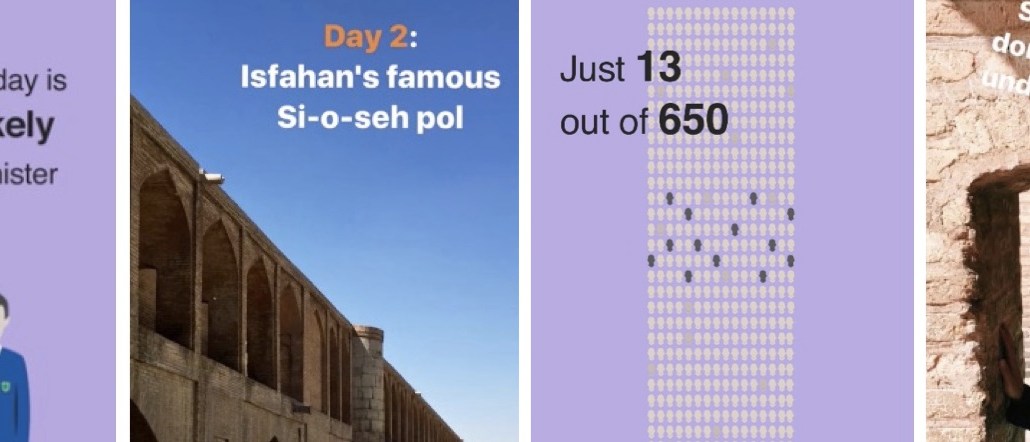Infographics and video diaries: How news broadcasters are using Instagram Stories

Instagram Stories has become yet another tool for broadcasters to reach new audiences and test out content ideas. Many are still in the experimental stage, though, and have yet to lay down any strict strategies.
Broadcasters are using the 4-month-old feature to repurpose video content, push out infographics and take viewers on local tours. Right now, the feature is more about sampling than drawing in viewership to owned platforms.
“We’re adding tracking codes to the hyperlink, but we still don’t know whether people are doing something when they arrive at the website. There’s no necessary correlation of experience there,” said Mark Frankel, social media editor at BBC News. “Instagram is still primarily an off-platform experience, but in my mind that doesn’t matter as long as they are getting more from BBC News than if they had not seen it.”
BBC News uses Instagram Stories — often one a week, a mix of video and static images — to show off content from its site to a younger audience. It’s finding it a successful place to post infographics and data visualizations.

A recent Instagram Story looked at whether there will ever be a black Prime Minister in the U.K., linking it to a BBC News story and TV program. The graphics looked at how different communities in the U.K. have access to varying opportunities. “The different infographics play out as a story,” added Frankel. In time for December’s party season, another Instagram Story helped Brits calculate their booze intake and compare to other countries, linking to an interactive tool on BBC’s website.
BBC News gets between 70,000 and 100,000 views at the beginning of a Story, and about 50,000 at the end of a seven or so clip Story. “It’s fairly good retention,” he added.
For news broadcasters, a more ordered, high-quality narrative on Instagram Stories works better than the rough-and-ready, breaking-news, visceral look and feel that works on Snapchat. This is something Al Jazeera English has found too. “Snapchat is better for hard news,” said Ziad Ramley, lead producer, social media and platforms for the media company. “We’re trying to keep Instagram apolitical. It’s one of the few remaining places where speech is positive. That’s a lot to do with content that’s being posted.”

Al Jazeera’s Instagram Stories — often one or two a week — are location based: One particular series it found successful was giving viewers guided tours around the cities and bureaus its correspondents are based in. After receiving positive feedback and dozens of comments, it repeated the format in Mexico City, Jerusalem and Johannesburg, getting views in the tens of thousands for a 10-clip Story. Although it’s finding viewer retention is low, previously writing that it loses 40 percent of viewers by the second shot. As such, Al Jazeera’s Instagram Stories are half the length of its Snapchat stories.
During a seven part series on the Iran water crisis, correspondents traveled around the country. Al Jazeera released video diary entries on Instagram Stories, offering behind-the-scenes footage supplementing the film documentary which was aired on TV and YouTube.
By being able to tag within Stories, Al Jazeera can credit the photographers that contribute to them. “Collaboration is a big part of what Instagram is about.” It plans to shoot video diaries on Instagram Stories for upcoming documentaries: “The option to jump straight into a story makes it a much more effective marketing tool to draw attention to other projects.”
More in Media

Here are the biggest moments in AI for publishers in 2025
Here are some of the moments that defined how publishers adapted to the AI era this year.

Digiday+ Research roundup: Gen Z news consumption and diversification in the DSP space were 2025’s top trends
As 2025 winds down, we rounded up the biggest trends of the year, based on the data that resonated the most with Digiday’s readers.

What publishers are wishing for this holiday season: End AI scraping and determine AI-powered audience value
Publishers want a fair, structured, regulated AI environment and they also want to define what the next decade of audience metrics looks like.








